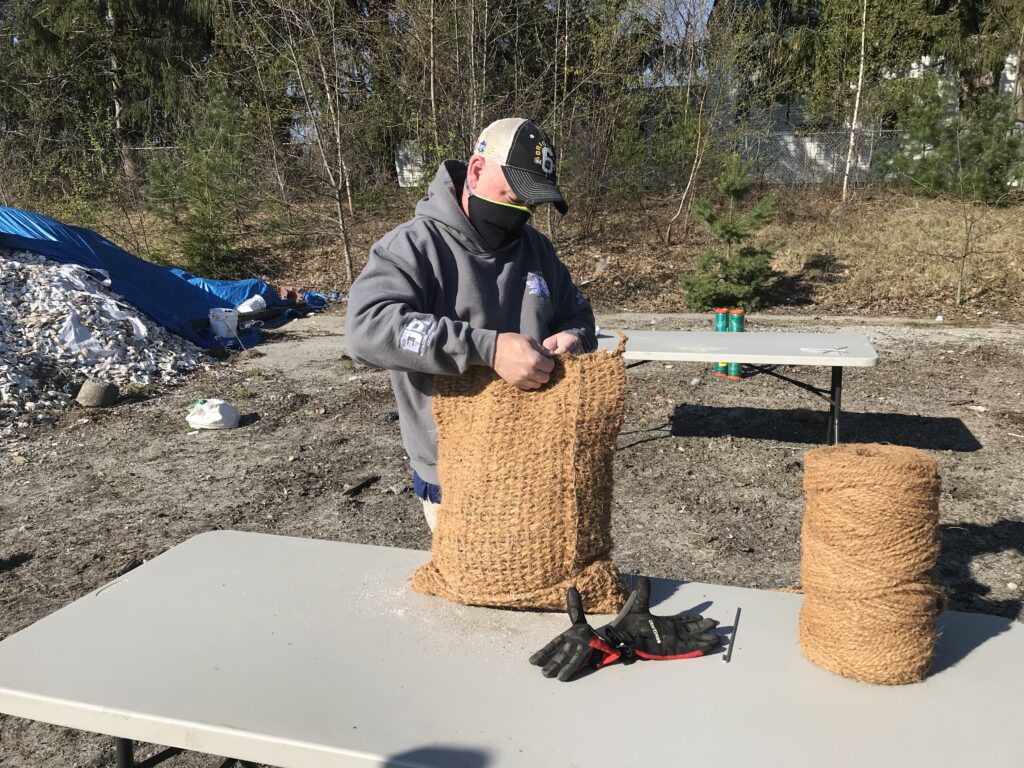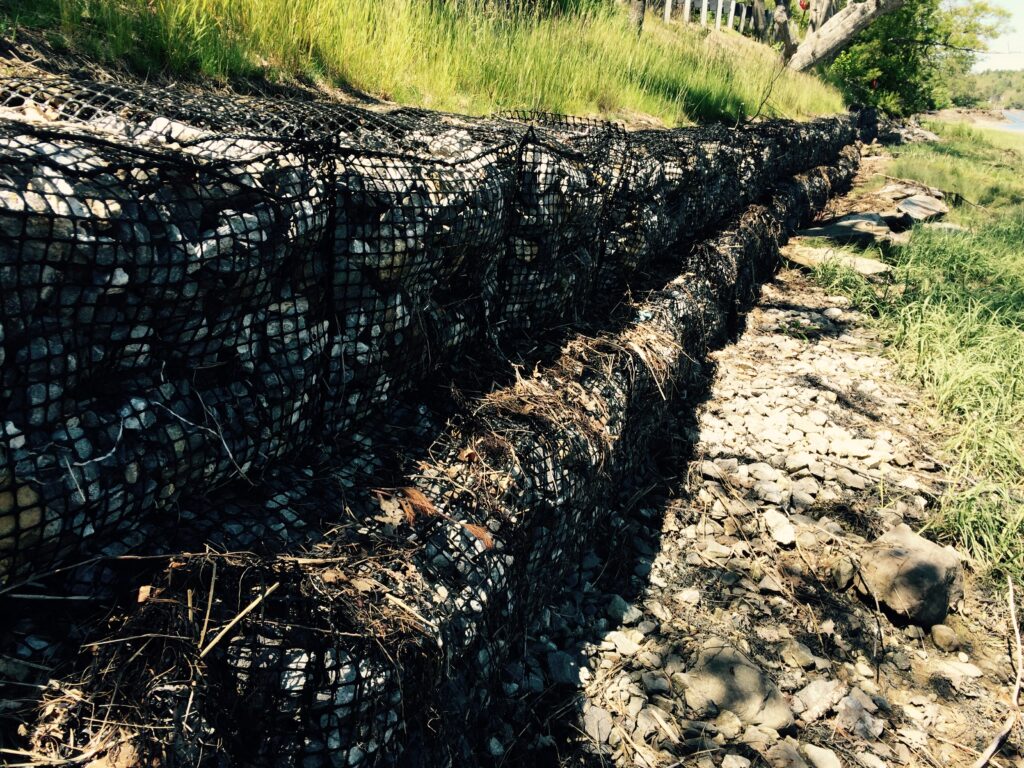Perspective
This article is part of IECA’s efforts to provide different perspectives on hot topics within, or that may directly affect, the industry. The purpose of these articles is to spark intrigue through dialogue as members of the industry consider their role in global issues.
Residents of Hampton Beach, New Hampshire received an early and very unwelcome holiday surprise on Friday, 23 December 2022. Wind and heavy rain swept toward the coastline. This was followed by a storm surge which resulted in substantial flooding of coastal property and infrastructure. This highly developed beach community, like many along the New England coast, was very hard hit.
The flooding began around 10 a.m. just before high tide was scheduled to hit. Things got much worse just 35 minutes later, when an astronomical high tide arrived with devastating fury. The seawall on Ocean Boulevard was overtopped by both surging tides and boulders.
Many local roads were quickly closed. A portion of U.S. Route 1 was closed between Hampton and Hampton Falls when a tidal marsh overflowed the roadway.
Fires broke out, and the flooded roadways made fire response difficult. Eight local fire departments provided support to the overwhelmed Hampton Fire Department.
Hampton Fire Chief Michael McMahon discussed the fires ignited during the flooding. “Motors and heating systems, compressors on refrigerators and electrical wiring can be operating correctly, but sea water is not good for this stuff.”1
Similar events are occurring all over the globe. Many in the scientific community have been warning that greenhouse emissions will result in significant climate warming which will lead to substantial glacial melt. As more water is released into our oceans, sea levels rise. This leads to more water in the atmosphere and storms growing more intense. As result, our coastlines are increasingly vulnerable to storm surge (Figure 1).

An article published earlier this year in The Washington Post, authored by Brady Dennis, discussed the impact of extreme weather events in 2022. “The lessons we are learning from these more frequent, more costly extreme weather events should be apparent now across many regions,” said Adam Smith, a scientist with the National Oceanic Atmospheric Administration. “There’s no reason to believe that the trends will reverse or flat line.”2
Scientists agree that global warning will continue to accelerate unless humans significantly cut back on the greenhouse gas emissions that are heating up our planet.
Coastal communities around the globe are facing very difficult decisions. Regarding these issues, Suzanne Lettieri, a visiting architectural critic at Cornell University was quoted by Elizabeth Rush in her very engaging 2018 book, “Rising.” Lettieri said, “We have two choices, ‘raise or raze.’ You can either lift your home on stilts to allow the water to move under it or abandon the structure and move on.”3
In 2012, author John Englander published an important book, “High Tide on Main Street.” In this volume, Englander reviewed the facts regarding sea level rise and the importance of what he called “intelligent adaptation” going forward. Simply stated, Englander concluded that rapid sea level rise was going to continue and that that we simply must prepare to take the necessary steps to respond appropriately.
Those steps include planned abandonment of vulnerable areas, a most unpopular strategy. Such a plan is already in place for the village of Fairbourne, Wales, in the United Kingdom. Not surprisingly, the announcement of this plan was not well received by village residents, especially those with deep roots in the community. The government, taking a longer view, introduced this strategy after weighing the village’s projected vulnerability to future sea level rise.
The Indian Ocean island nation of The Maldives is faced with the possibility of total relocation. The entire country averages only about 4 feet above sea level. The concept of moving an entire nation to higher ground is hard to process, but in this case it is a very real possibility.
Abandonment, of course, is just one alternative to sea level rise and storm surge. In many vulnerable communities, homes are being elevated. In other cases, seawalls have been installed. In Saco, Maine, a highly vulnerable wastewater treatment plant was recently decommissioned and was replaced by a new facility on higher ground.
Living shoreline solutions offer a valuable set of tools to coastal planners. In 2016, the United States Army Corps of Engineers Permit #54 encouraged states to adopt living shoreline, or nature-based solutions, to help cope with rising seas and coastal erosion.
Technology is available to attenuate wave action and help accrete sediment and sand. While traditional solutions called for hard armoring or seawalls, living shoreline techniques aim to work in harmony with nature while offering coastal protection (Figures 2, 3). Living shorelines are also significantly more nature friendly than hard armor systems. Adoption of living shoreline methodology is experiencing rapid growth in the United States, a most positive development.
In the Netherlands, living shoreline methodology has been successfully practiced for three millennia. At long last, the world is starting to recognize the benefits the Dutch continually have gained from these practices over the past 1,500 years.
Nine years after publishing “High Tide on Main Street,” John Englander produced a sequel. His 2021 book, “Moving to Higher Ground,” simply states that sea level rise is now unstoppable, lamenting the inability of our governments to deliver any meaningful strategy or actions to reverse outcomes.

Finding solutions for these serious environmental problems is the real challenge. In his second book, as the title suggests, Englander concluded that we must simply prepare to relocate to higher ground. He also had specific suggestions to finding solutions.
- Reduce CO2 emissions to slow the warming, the melting ice and rising sea.
- Prepare for more frequent flood events.
- Prepare for long-term sea level rise.
- Address the multitude of other critical environmental issues. These include clean air, safe drinking water, recycling, ending the scourge of plastics in our ocean, coral reef protection, wildlife and ecosystem conservation and restoration.4
The path forward is challenging and loaded with obstacles. Political leaders, by nature, tend to avoid issues that lack immediate urgency. Sea level rise is a long-term problem, while election cycles operate in a much tighter time frame. We simply cannot wait for government officials to take action. To successfully confront the serious implications of sea level rise, serious long range planning is essential. In the military, the three “Ts” are often discussed.
The words are training, teamwork and trust. Perhaps this approach will yield the best possible long term results.
- Training. Education is vitally important. An informed public can and will demand that government leaders take meaningful action on climate change.
- Teamwork. The entire developed world must work toward solving the long-term sea level rise problems that threaten our planet.
- Trust. Our common bond requires that we are honestly confront this significant challenge together.
We owe nothing less to future generations.
There are many pathways to getting involved in this vital work that include research, volunteerism and advocacy. Climate Ready Communities [climatereadycommunities.org] has published a free guide for building climate resilience. The Nature Conservancy [nature.org], which works worldwide on tackling climate change and protecting our oceans, is another excellent resource. Locally there are many government agencies and non-profits engaged in natural resource protection. There are abundant opportunities for volunteers to get involved with beach monitoring, living shorelines, education and more.
References
Chiaramida, Angeljean. Hampton Beach: Fire Displaces Family, Flooded Homes, Floating Cars as Storm Surge Hits. 23 December 2022. Seacoast Online.
Dennis, Brady. Extreme Weather Took Its Toll on United States in 2022. The Washington Post. 30 December 2022.
Rush, Elizabeth. 2018. Rising. Milkweed Editions, Minneapolis, Minnesota. p. 78.
Englander, John. 2021. Moving to Higher Ground. The Science Bookshelf, Boca Raton, Florida. p. 168.
About the Expert
Peter M. Hanrahan, CPESC, is an independent consultant and has more than 44 years of industry experience. Peter has been an active member of the International Erosion Control Association since the mid-1990s and has served the organization in many roles.












